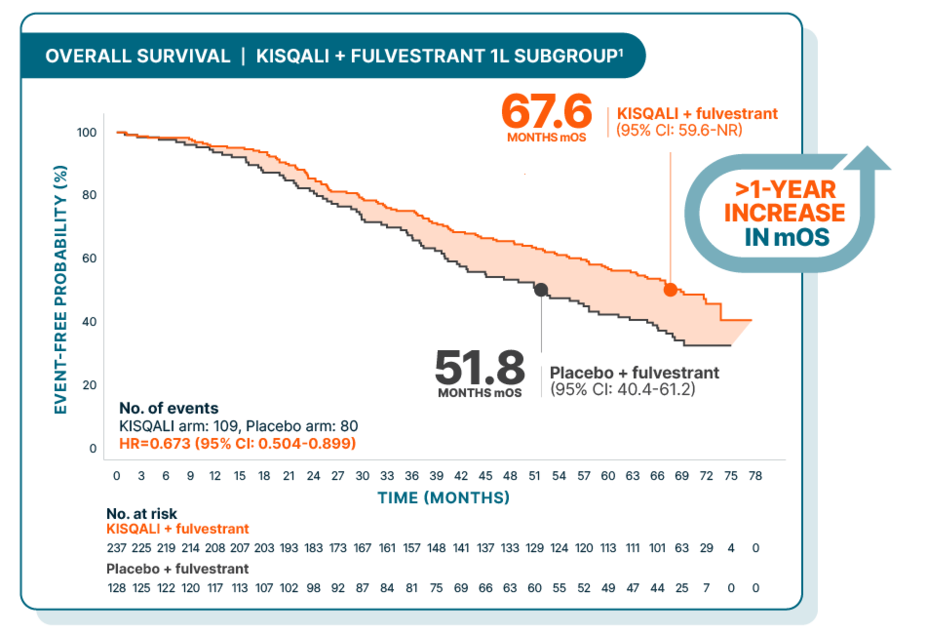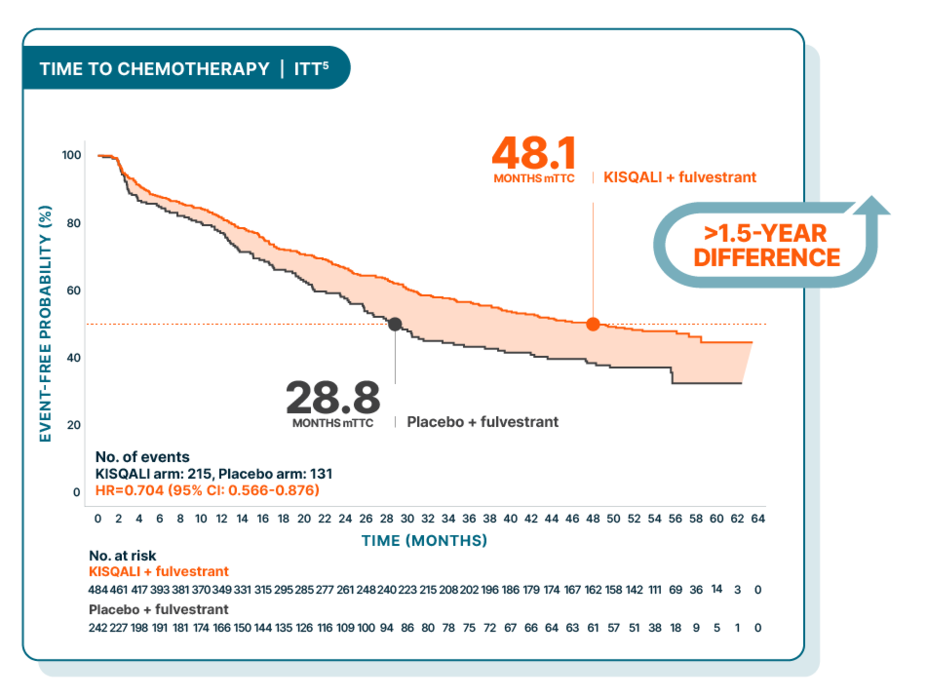
More life for living
MONALEESA-3: KISQALI + fulvestrant in postmenopausal patients, data from the 1L subgroup
OVERALL SURVIVAL
Over 5.5 years median overall survival for 1L postmenopausal patients with fulvestrant
At a median follow-up of 71 months
Hazard ratio is based on unstratified Cox model.2
Results from the 71-month analysis were not prespecified and were observational in nature; as such, there was no prespecified statistical procedure controlling for type 1 error
Statistically significant improvement in overall survival in the 1L/2L ITT population3,4:
At a median follow-up of 39 months, mOS with KISQALI + fulvestrant was not reached (95% CI: 42.5-NR) vs 40.0 months with placebo + fulvestrant (95% CI: 37.0-NR); P=0.00455; HR=0.724 (95% CI: 0.568-0.924)
1L, first line; 2L, second line; HR, hazard ratio; ITT, intent to treat; mOS, median overall survival; NR, not reached.
TIME TO CHEMOTHERAPY
Median time to chemotherapy delayed 4 years
At a median follow-up of 56 months
Time to chemotherapy was evaluated in a post hoc exploratory analysis and was defined as the time from randomization to the beginning of the first chemotherapy after discontinuing study treatment. There was no prespecified statistical procedure controlling for type 1 error3
MONALEESA-3 was a randomized, double-blind, placebo-controlled, phase III study of KISQALI + fulvestrant (n=484) vs placebo + fulvestrant (n=242) in postmenopausal patients with HR+/HER2- mBC who received no or only 1 line of prior ET for advanced disease. OS was a secondary end point; PFS was the primary end point.4,6
ET, endocrine therapy; HER2-, human epidermal growth factor receptor 2-negative; HR+, hormone receptor-positive; mBC, metastatic breast cancer; mTTC, median time to chemotherapy; OS, overall survival; PFS, progression-free survival.


